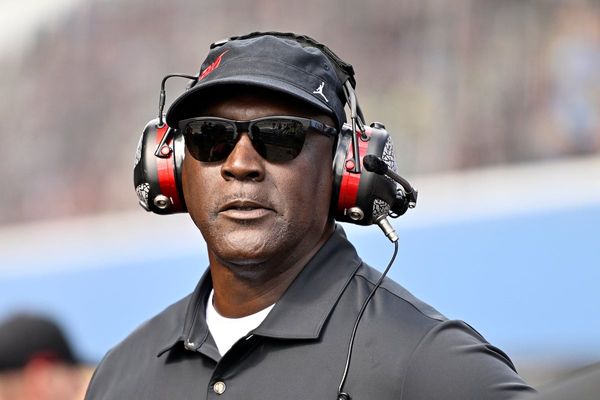
The journey from Cooma in southern New South Wales to Native Cat Flat in Victoria’s Alpine national park is a challenging trek along rugged four-wheel-drive tracks. For Richard Swain, a Wiradjuri man born in the Snowy Mountains, it’s worth the trip. We are headed to an area of remnant vegetation, fenced off from the more than 2,700 feral horses that live in the national park and Bogong High Plains.
There are four exclusion plots, each bordered by a modest wire fence. Behind the fences, lush sphagnum, dense vegetation, grass tussocks, shrubs and herbs thrive, showcasing an alpine landscape unaffected by the presence of horses.

Outside the fence, the ground is pockmarked with deep hoofprints and the native grasses are overgrazed. It looks like a paddock, not a sensitive alpine ecosystem.
“Australians haven’t actually started living on this continent like they are from here and they have a responsibility of custodianship,” Swain says.
Swain is a river guide and the Indigenous ambassador for the Invasive Species Council. He says that the hard-hoofed mentality of colonisation persists in the high country, supported by the romantic imagery of Banjo Paterson poems. But that world of mountain cattlemen with oilskin coats and creaking saddles only existed from 1840 to about 1950. A ban on grazing cattle in the Victorian high country was introduced in 2005. Swain says many still weigh the value of that recent cultural heritage against the natural heritage values, and put natural values – and native species – last.
At least 100 native species have gone extinct in the 236 years since European settlement of Australia. Swain is concerned that two critically endangered species endemic to the high plains, the broad-toothed rat and alpine water skink, could be next.

“This is the habitat that is required for our critically endangered species, and in this entire wetland you’ve got only these four plots, not even as big as a tennis court … the rest of it is mowed off like a golf course,” Swain says. “If you ever want to know what horses do to the high mountain country, this is it.”
The horses do more than leave hoofprints. In breaking up the vegetation, they fundamentally change the ecosystem.
“The mountains were meant to be this thick vegetation – when the snow lands here, it doesn’t sit hard on the ground like it does out there, it sits on top of this vegetation, which allows for what’s called the subnivean space,” Swain says. “The skinks of the mountains thermoregulate, they need this sort of vegetation so they can be low if they want to be cool or high if they want to be warm. And the broad-toothed rat, they don’t actually tunnel in the ground, they tunnel in the vegetation.”

‘Look after the waters’
Gunnai man Wayne Thorpe observes the damage caused by feral species at the source of the seven major waterways on his country. That damage will flow downstream to meet the ocean, including at his home in Lake Tyers. The Gunaikurnai people in East Gippsland historically moved seasonally between the high country and coast: from the Great Dividing Range to Ninety Mile Beach, from west of Wilson’s Prom and Mount Baw Baw, and from east of Snowy River up to Bemm River along the coast.
“We understand that water holds memory,” Thorpe says. “That’s the water’s birth, it’s got the memory from the mountains to the sea. It’s still coming out and it’s forming the creeks and the rivers, and it’s carrying the memory of being trampled.”

Through grazing, trampling, and soil compaction in wetlands, along with their bathing habits, feral horses disrupt stream and river ecosystems, causing erosion, bank slumping, nutrient imbalances, and degraded water quality. This is particularly concerning, Thorpe says, as they roam at the source of many of Australia’s largest and most economically important rivers, including the Murray, Murrumbidgee and Snowy rivers.
“By the time it comes down here, what are people drinking? What are the fish living in? And what are we eating?” Thorpe says.
“We’ve got to recruit more people to be caring for country and therefore custodians. If you like eating clean fish, look after the waters.”
Don Driscoll, professor of terrestrial ecology at Deakin University, says that a failure to preserve alpine ecosystems could have broader impacts on biodiversity.
“They [the broad-toothed rat and alpine water skink] only live in that alpine area, while horses occur across the continent and across other continents,” he says.

“If we can’t protect those animals in the tiny places that they occur and we think we have to spread horses around, even in those areas, there isn’t much hope for biodiversity in general. They really deserve the right to live where they evolved in the alps.”
The past few years have been difficult for researchers and government agencies warning against the impact of feral horses. The former NSW government introduced laws in 2018 to recognise the heritage and cultural value of brumbies and prevent population control through culling. In Victoria, national parks staff received death threats over plans to cull through ground shooting.
The Minns government in October reinstated aerial culling in Kosciuszko national park after public consultation, a Senate inquiry which found feral horses posed an extinction risk to native species, and an official warning from the federal threatened species committee.

The installation of Labor governments in NSW and federally, in addition to the Victorian Labor government which has maintained support for culling, has given ecologists some renewed hope, says Driscoll.
“For decades, the science has been ignored,” he says. “Now the science is being taken seriously.”
Parks Victoria does not release figures on the number of horses removed, only on the target figure of 500 in the first year outlined in its 2021 feral horse management plan. But Jordan Crook, the parks and nature campaigner at the Victorian National Parks Association, says evidence of a reduction in horse populations is clearly written on the landscape.
But he says that effort is being “undermined by NSW’s protection of [feral horses]”.
“Victoria is doing very well at reducing its feral horses particularly in the national parks, but they can just walk across [from NSW],” he says. “Feral horses don’t know state borders.”
The association was instrumental in the campaigns that led to the creation of the Alpine national park in 1989 and has long advocated for protecting the alps from cattle, horses, and other invasive species.
“The alps and the alpine region is very small, they are very fragile,” Crook says. “Feral species including feral horses do immeasurable damage to those ecosystems and kill and maim wildlife that live in them.”
Rehoming v population control
For many opponents of brumby culling, the relatively recent creation of the national parks, combined with the 2005 final ban on grazing cattle in the high plains was perceived as an assault on their way of life. Culling feral horses further exacerbates this sense of displacement and loss of connection.
Claire Rogerson, based in Dalgety, NSW, is the founder of Snowy Brumby Horsemanship. She focuses on rehabilitating and rehoming brumbies and currently has 32 on her property in various stages of training.

Trapping and rehoming is the solution put forward by Rogerson and many others who connect to a stockman’s view of the high country. But rehoming a brumby takes a high level of skill and feral horse population survey efforts show there are more horses than can reasonably be removed through trapping alone. An advertising campaign by Parks Victoria to rehome trapped brumbies saw only 10 expressions of interest from suitable homes, to take between 38 and 51 horses a year.
Brumby numbers in the Kosciuszko national park have increased by 31% over the past two years. A spokesperson from Parks Victoria told Guardian Australia that damage from invasive species including horses, habitat loss due to bushfires and other impacts of the climate crisis have exacerbated the conservation challenges facing the Alpine national park.
They said Parks Victoria had an “obligation to control invasive species in Victoria’s national parks, including feral horses”.
“There are large numbers of feral horses in alpine areas and the damage they cause is evident,” they said. “The most humane feral horse management techniques have been selected on the best advice.”
Swain says degradation of the mountain valleys due to invasive species can easily be overlooked by the untrained eye, which makes it hard to get public support behind proposals to protect the area from its photogenic invaders.
“If we restore the health of the land and control invasive species, we’ll make progress,” he says. “The biggest threat to our native species is invasive species, and it’s Australia’s culture of not caring enough that is the biggest challenge.”







